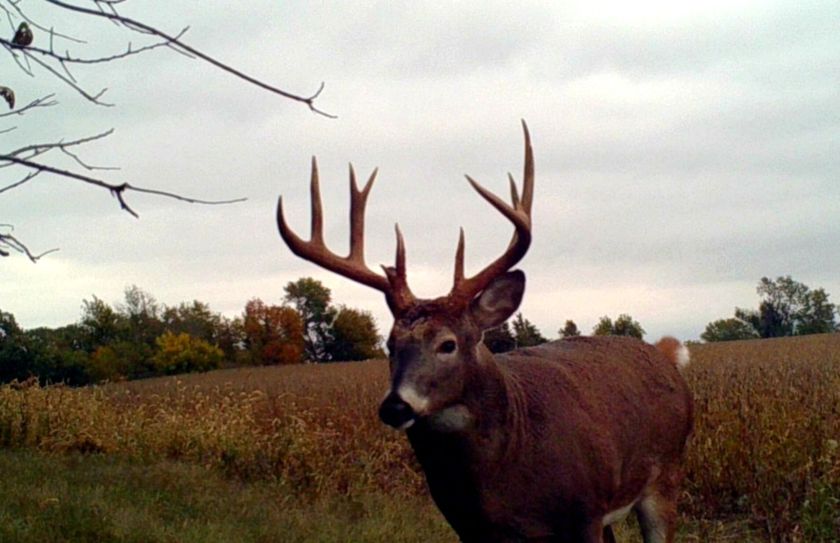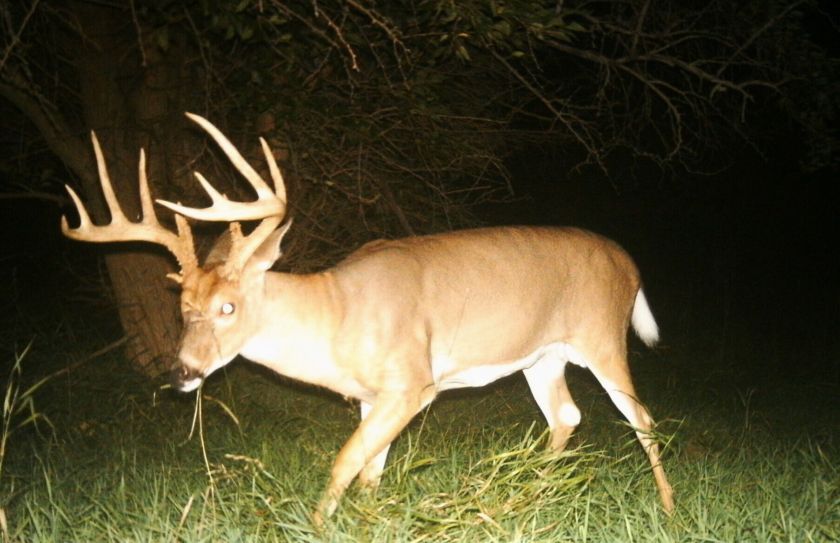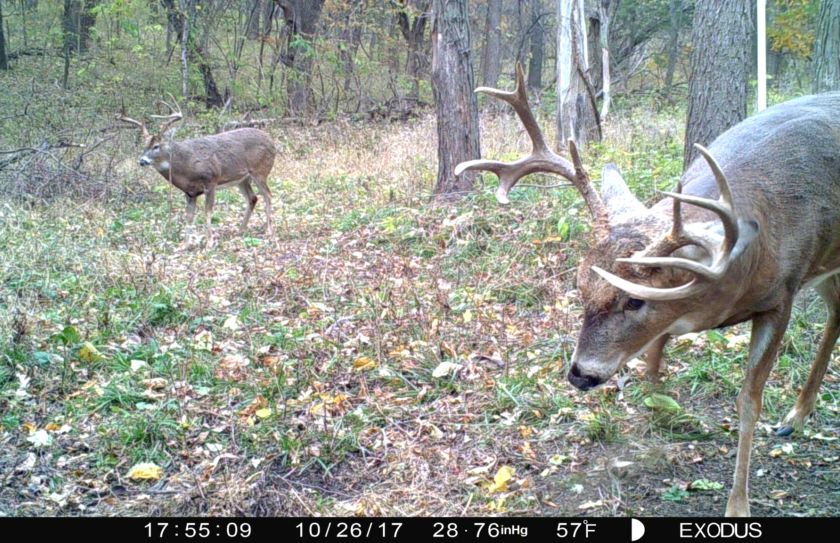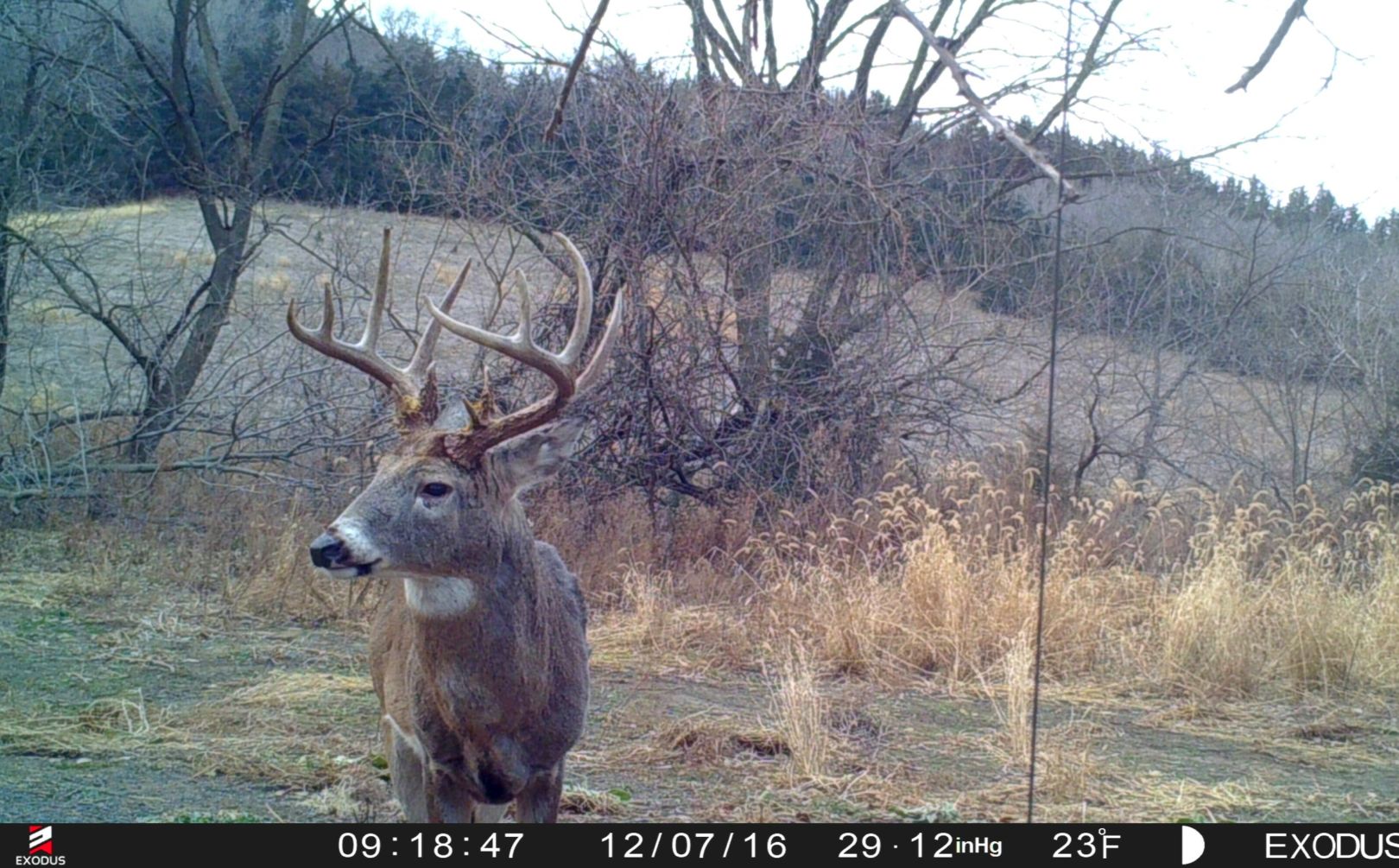
Can you imagine the flurry of craziness that a mature buck partakes in throughout the rut? For the majority of the year a mature buck lives a life of consistent boredom, but then the phases of the rut occur and when the Post Rut hits, there may be no better time to hunt a long range cruising giant!
Outside of a few pushing matches with other bucks in the neighborhood and the occasional unwanted intrusion from hunters, a buck focuses primarily on food, cover and security. During the Winter, Spring and Summer months an older buck may spend his time with a chosen few, and even during the bulk of hunting season a mature buck will often appear to tolerate the company of another buck. But during the rut, it's Game-On! That same methodically stable and semi-social creature, suddenly becomes a seemingly rut-crazed monster, capable of aggressive brutality, sudden mood swings and strategically independent allusiveness. Picture a slow and gentle cycle that takes 7 months to complete, gradually increasing in it's entensity from a post-Winter recovery to a mid-Fall explosion! The peak of the rut arrives, the craziness insues and then a strange thing happens in the whitetail world; it's over, but someone forgot to tell the bucks.
I would imagine the female portion of the deer population welcomes the end of the rut, and if you are an immature wannabe that has been getting your rear kicked for over 3 weeks you may be too, but I believe a dominant mature breeder has a different attitude! He has experienced the build-up, he has grown to be an incredible physical specimen and he is ready for more, even if the rest of the deer herd is not. It is because of this, that the Post Rut phase is my 2nd favorite time to hunt during the phases of the whitetail rut!
*You can use this Rut Formula to know exactly which days that you can't miss hunting, during the 2017 Post Rut Phase.
Why Can Post Rut Hunting Be So Productive?
Although a rut-hungry buck eventually stops continuing to prowl for receptive does, he doesn't simply stop as soon as the majority of the does in the neighborhood have completed the estrous cycle. He is still ready, and in my experience has the potential to search sometimes very long distances in the primal hopes of finding 1 more doe. Throughout the past 15 years of using game cameras, this is the period of time when I have captured some of the biggest bucks of the year. What is an interesting factor of Post Rut buck pics? Many are of bucks that have rarely been seen, and a surprising number have never been seen. This also mirrors my own hunting observations as well! Several times throughout the years I have had close encounters with bucks that have mysteriously appeared, oddly within areas that wouldn't typically be used by the core bucks that inhabitat the parcel. In fact on a few occasions I have been caught gaurd watching in front of the stand locations, when I should have been looking behind the stand location.
Post Rut wanderers seem to get themselves into situations they typically wouldn't within their home, core area. They move during the daylight hours in search of a female just like they do during the Peak Rut, but they often complete their trips into lands they are less familiar with. They haven't been exposed to the seasonal hunting pressure within the areas that they travel into, and they often make mistakes not typical of the local deer herd that has already adjusted to nearly a full early bowseason of hunting pressure. Although most of my mature buck opportunities have historically offered themselves during the pre-rut and to a lesser degree the Peak Rut, my mature buck encounters per sit have come at an extremely high rate during the Post Rut. When I have experienced an unfilled buck tag during the rest of the bow season, I have geatly enjoyed my Post Rut hunts! Because of game camera pictures and personal hunting experience during the Post Rut, I rank the Post Rut my 2nd favorite time to be in the whitetail woods during the various phases of the whitetail rut, behind the Pre Rut.
When Does the Post Rut Begin?
When the Pre-rut occurs, bucks experience activity level surges while anticipating, and eventually realizing initial breeding opportunities with little effort. As the rut continues, breeding opportunities peak, and then decline with each passing day, as a higher % of does have been successfully bred or passed through their estrous cycle. The exact opposite of the dynamics that kick-off the phases of the whitetail rut, the Post Rut begins when the vast majority of does have completed their estrous cycles. In the Midwest where I hunt in OH, MI and WI, the Post Rut begins and continue roughly from November 13th through the 20th, but that is just a very rough estimate.
During the Pre Rut a mature buck really doesn't stray very far from his home, core range. Initially, finding a receptive doe within his core area is fairly easy. But as each doe is bred receptive does become harder to find, and the distances traveled to breed in many cases can expand greatly throughout the rut. The social dynamics of overall population numbers and sex ratios certainly contribute to how far a buck will wander away from his core range. Bucks in Northern, low deer-density, high cover areas can travel many miles between doe family hot spots, while a buck living within a high population poor sex ratio area may find he really doesn't need to leave his core area the entire rut! While a buck will typically only breed a few does each year, his efforts become greater with each passing doe and it pays to be ready for the expanding movements of a local giant as the primary rut nears it's annual end.
How Do You Hunt the Post Rut?
The Post Rut can feature extremely random movements, however if you are waiting for a distant wanderer to come cruising by during the hours of daylight you need to count on cold and calm weather to keep him moving. There is nothing that will cut the travel plans shorter of a Post Rut buck, than unseasonably warm or extreme weather patterns. Are you seeing a pattern of my recommendations of using cold fronts to predict your success while hunting during the various phases of the whitetail rut? While the calm and cold side of a major cold front kicks off the start of the Pre Rut during the last 10 days of October, a mid-November front keeps it going. When those comfortable cruising conditions appear in the forecast, it's time to sit in a tree!
Using a cold front to predict when to hunt, I focus on funnels, food and doe family groups for a strategy of where to hunt. Although a cruising Post Rut monarch may not be in tune with the recent hunting activities on the land you hunt, he will be familiar with the land enough to know where those hot spots of doe activity typically take place. He may be a summer inhabitant on your land, or possibly even just a perennial short-term guest, but you can bet he will know where to find doe family groups. Major connections of bedding cover, including brushy fencerows, ditches, inside corners of major woodlots and slight depressions across major open ag areas are all locations to connect on a buck during this time of the season. Of course you can still take advantage of morning funnel movements between bedding areas, but during the bulk of the day I like to look for major funnels of long-distance connections as bucks sometimes take a chance traveling through during daytime searches. However, as the day approaches the evening hours, your thoughts should turn towards does and food sources.
Do you have stand locations that allow you to observe major doe movements as they shuffle safely by you on the way to their favorite evening food source? Those can be killer spots to ambush one of the oldest bucks in the neighborhood. But be vary cautious, those does have been pestered and chased for over 3 weeks at this point, and often don't take warmly to an approaching interloper...either by you or a buck! Several years ago I was seconds away from drawing on a huge, unrecognizable buck during the Post-rut. He was big, aggressive, and started to focus his attention on a handful of fawns within 20 yards of me. When the mothers feeding about 50 yards away discovered his advances-they immediately exited the field. I was left wondering exactly what happened, when in reality they just didn't care for his sudden appearance into their otherwise stress-free dinnertime.
By focusing on food during the evening, and major funnels of movement during the daytime you may get a chance at one of the oldes bucks in the area. Try to focus on the areas on the land that you hunt that could facilitate mature buck movements from neighboring lands. I love to hunt the edge of a major bedding area that attaches to heavy cover extending for several hundred yards away from the land that I hunt, and towards a known mature buck area. An evening hunt that allows you to watch major doe movements as they exit a bedding area attaching to other remote areas, may give you the perfect opportunity to experience an opportunity on a buck that moves into your land during the night or day through heavy cover. Cold, evening sits have been my #1 pattern for observing Post Rut bucks while they are simply following the doe herd to their preferred evening food source.
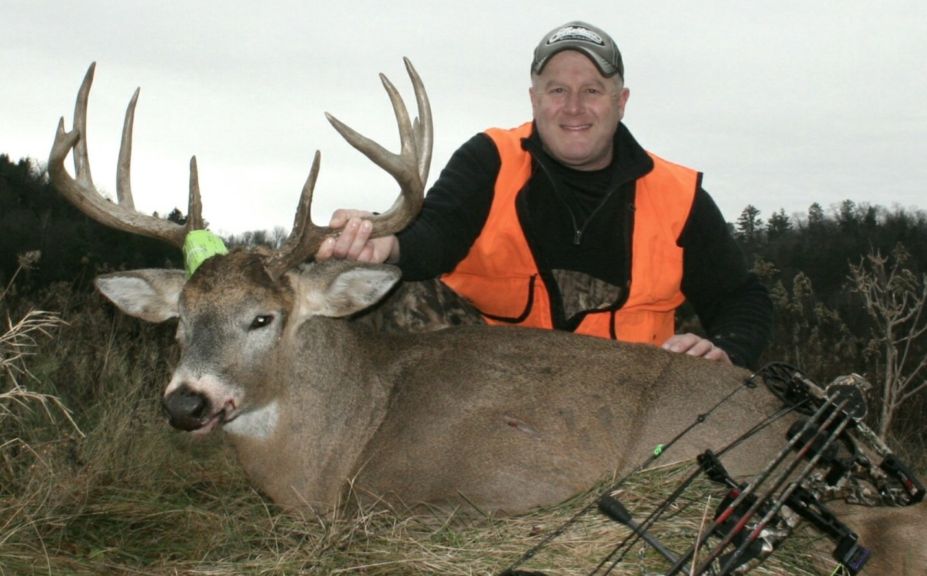
*In 2013, this Post Rut archery harvest, came into a scrape line on the last day of WI's gun season. Check out the strategy behind where he was killed, by reading about Bedding Staging Areahunting tactics.
When Does the Post Rut End?
Although a seasoned old veteran will stubbornly travel for 1 more doe after the super majority of them have already passed through their estrous cycles, he certainly has his limits! If the weather stays cold, you can count on several days of good, Post Rut hunting. But as the days pass into a week or more the movements will significantly decline, and eventually stop. Pre Rut movements typically starts with a major cold front, and Post Rut activities often end with a major warm front, or unstable and volitile weather. Keep in mind this is a time when very few does, if any (depending on the social dynamics) are entering their cycles, so with no scents of the rut in the air, and the availability of does kept to a bare minimum, it doesn't take much to completely shut-down the entire rut. The Peak Rut ends when the vast majority of does became unreceptive, and the Post Rut ends when the majority of bucks eventually recognize it.
Conclusion
From Pre Rut to Post Rut, the best time to be in the woods on the land that you hunt really depends on the habitat and social dynamics in your area. For defined and strategic strikes on a specific mature buck with an estblished core area on the land that you hunt the Pre Rut is very hard to beat, but if you lack quality Fall food and cover he probably won't be there. If you hunt public land or need to rely on the random movements of mature bucks over a long period of time, the Peak Rut will be a great bet for you. And if you strike out on the first two phases of the rut, the Post Rut can be viewed as one of the best times to take advantage of the distant wanderings of a giant mature buck who otherwise would have rarely had reason to set foot on your land. By changing your strategies as the phases of the whitetail rut progresses, you can make sure to maintain high value sit opportunities for 3-4 weeks whether you focus purely on your own hunting land, or on multiple hunts across several states on both private and public land.
Make sure to check out my articles on the Pre Rut and Peak Rut too!
